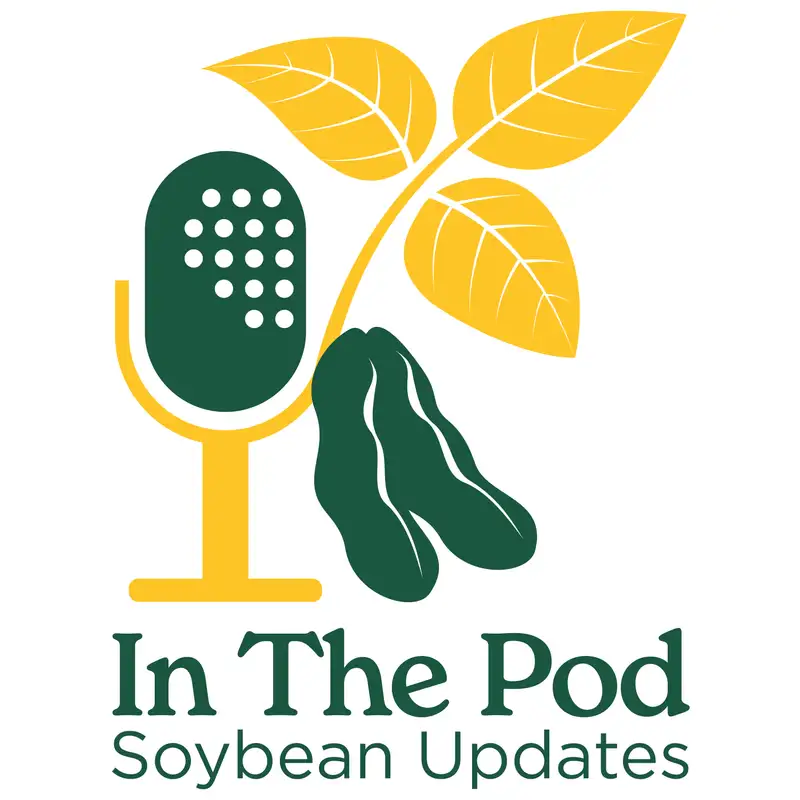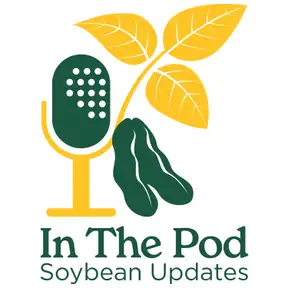08/14/25 From Green to Gone in a Week: Battling SDS in Soybeans
You're listening to In The Pod, soybean updates, a weekly trek into the latest soybean information from NDSU Extension. It's as bad as its name, sudden death syndrome, the second most feared pathogen that attacks soybeans. Wade Webster, NDSU Extension plant pathologist, has the facts. Wade, at this point in the season, what should farmers be looking out for?
Wade Webster:Yeah. So at this point in the season, the August, what we're gonna be looking for is sudden death syndrome. And sudden death syndrome is relatively new to the state of North Dakota. It was first found in 2018 in Richland County and has started spreading throughout the eastern portion of the state. In 2024, we had very conducive conditions for it, and we were able to confirm it in almost every field in Richland County that we scouted as well as in Dickey County and in Cass County. So sudden death syndrome is developing, and it's something that we're trying to bring awareness to so that farmers understand what to look out for, and then once we have it, understand how to manage it.
Bruce Sundeen:How does sudden death syndrome spread?
Wade Webster:Yeah. So sudden death syndrome, it is caused by a pathogen called Fusarium verguliforme. It's a soil borne pathogen, so that does survive in the soil and in crop residue, especially corn residue. And so the way it spreads is usually with equipment. And so one of the ways that we suspect that it moved up here was with equipment being sold in more southern regions, being brought up to the state of North Dakota and introduced that way. It can also be brought in through boots just from human movement, again, of soil particles.
Bruce Sundeen:What can be done to spot and control it?
Wade Webster:Yeah. So sudden death syndrome, the first symptom that you're going to see is gonna be those leaf tissues will develop what's called interveinal chlorosis, and this interveinal chlorosis is where those leaves, the veins on them turn dark green, but in between those leaves, they start to turn yellowish and eventually turn brown. Now the name sudden death is very indicative of what it does. It can kill that plant in a matter of seven days, so it will go from a greenfield all the way to yellowing in about a week. Once we see those leaves start to turn yellow, those leaflets will drop off, but the petioles will remain attached to the stem. So when SDS is present, it oftentimes looks like it's little skeletons for plants out in that field. Another symptom is if you pull those plants up, occasionally, but not always, we'll see a blue fungal growth on that taproot. We don't see this with other soybean diseases. SDS is the only one with that blue growth. And then the last thing that we can do is if you take a sharp knife right on that soil line and you start to shave away on that stem, sort of like whittling a stick, you'll start to see that turning brownish, maybe looking like it's bruised. A healthy plant should look very white, but if it's SDS, we'll see that rotting root tissue.
Bruce Sundeen:Wade, is there anything we can do right now to control SDS? And what about options for next season?
Wade Webster:Yeah. So, unfortunately, at this point in the season, we don't have any management strategies that can help reduce SDS. But what's important is scouting those fields so we understand where SDS is present, and then we can make management strategies for the following seasons. And those management strategies primarily are a couple of options on first one is resistant varieties, and those resistant varieties are generally fairly successful. They will still have some level of disease develop, but they will reduce the severity of SDS in the field. Now we have historically not had a lot of varieties with SDS resistance as this disease is relatively new, but the breeders have done a phenomenal job of introducing resistant varieties to the Northern Great Plains. We also have early season seed treatments that can also help, and there are a few options out there that may be able to reduce those levels of SDS as well as protect those yields against this disease. Crop rotation is another option that we have for us, but one of the caveats is that this pathogen is what we call a saprotroph, and it survives on dead plant material, and it survives very effectively on corn residue, as I mentioned earlier. And because of that, crop rotations can help reduce that inoculum, but it's not going to eliminate it as it can continue to persist in that field.
Bruce Sundeen:Thanks, Wade. Our guest has been Wade Webster, NDSU Extension plant pathologist. You're listening to In the Pod, Soybean Updates, a weekly trek into the latest soybean information from NDSU Extension supported by the North Dakota Soybean Council.

